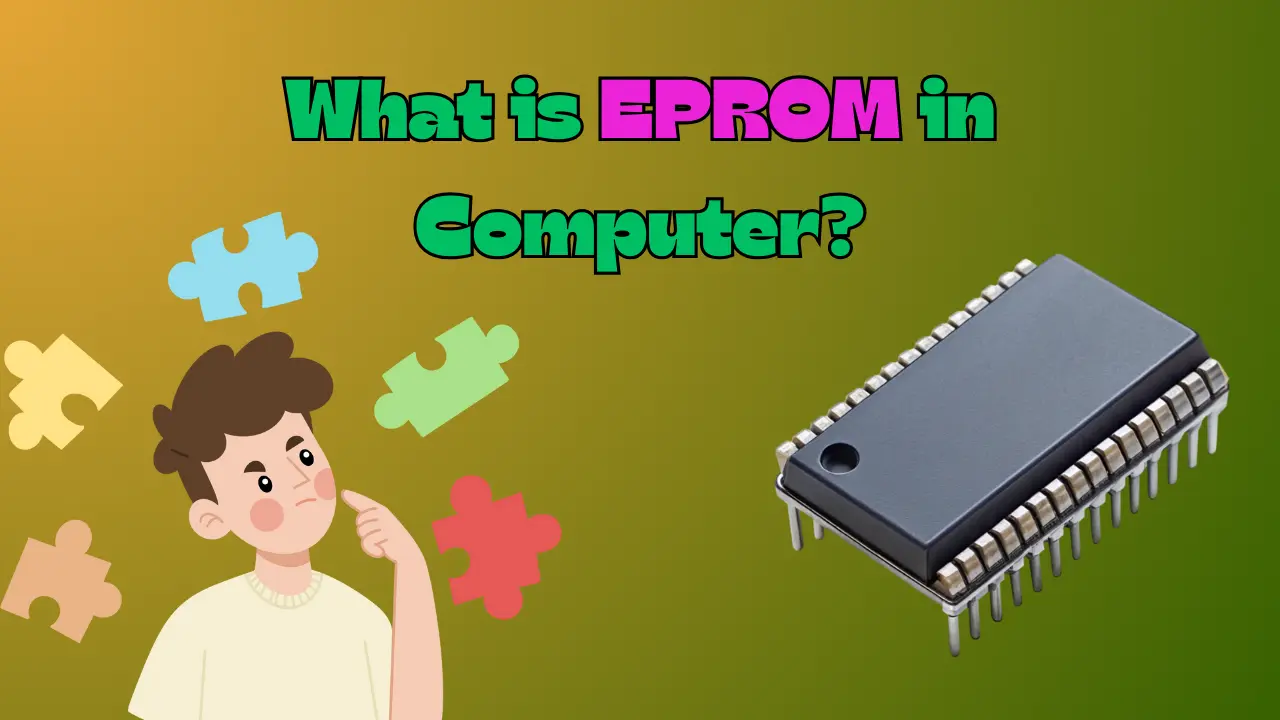What is EEPROM in computer?
Whenever it comes to data storage in a computer or electronic device, the name of ROM definitely comes up. One of these special memory types is EEPROM, which we call EEPROM. Let’s understand it in simple language.
Full name and meaning of EEPROM
The full name of EEPROM is Electrically Erasable Programmable Read Only Memory. That is, it can be electrically erased and reprogrammed. In ordinary ROM, data is written only once, but in EEPROM, data can be erased many times and inserted new.
History of EEPROM
How EEPROM came into existence
EPROM was developed in the 1970s to make data storage flexible. Earlier there was only PROM, in which change was not possible. With the advent of EPROM, data could be erased and rewritten.
Development of EEPROM
Moving forward from EPROM, EEPROM was created, in which the technology of erasing data came from an electrical signal instead of UV light. This made it easy to use it repeatedly.
How does EEPROM work?
Structure of EEPROM
EEPROM consists of floating gate transistors, which store data by trapping electrons. It consists of a grid of cells.
Process of storing and erasing data
Data is written or erased through electrical charge. Special voltage is required to erase it.
Types of EPROM
EPROM
In EPROM (Erasable Programmable ROM) data is erased by UV light. It has a transparent window through which UV light enters.
EEPROM
In EEPROM data is erased only by electrical signal, so it is more user friendly and portable.
Difference between EEPROM and EPROM
- UV light is required to erase EPROM.
- EEPROM is erased electrically.
- EEPROM can be programmed multiple times.
Advantages of EPROM
- Data can be written and erased repeatedly.
- Greater storage capacity in smaller size.
- Low power consumption.
- Portable and reusable.
Disadvantages of EEPROM
- Limited rewrite cycles (likely to get damaged after several thousand times of use).
- Slow data transfer.
- Special equipment required for programming.
Difference between EEPROM and other memory
ROM
Data is written permanently in ROM, it cannot be changed.
RAM
RAM is volatile, data gets erased when power goes off, while EEPROM is not volatile.
Flash memory
Flash memory is also a technology developed from EEPROM, in which data gets erased block-wise.
Where is EEPROM used?
In computers
In BIOS settings, in motherboards.
In mobiles
For storing software firmware.
In other devices
In cars, TVs, smart gadgets.
How to programme EEPROM
The data is written by giving voltage by a special programmer. Users can also update it.
How to erase EEPROM
In EEPROM, data is erased by electrical signal, while in EPROM, by UV light.
Lifetime of EEPROM
EEPROM has limited rewriting cycle, usually data can be written and erased 10,000 to 1 lakh times.
Future direction of EEPROM
With the advent of new technologies, more storage capacity and faster speed is becoming possible in EEPROM. Nano technology is changing its future.
Precautions related to EEPROM
- Program only at the right voltage.
- Keep in mind the overwrite limit.
- Protect from static discharge.
Conclusion
In the world of computers, EEPROM has given a new dimension to data storage. This small chip can do big things and that is why today EEPROM is present somewhere in every electronic device. Hopefully now you have understood what is EEPROM in computer and how it works.
Frequently Asked Questions
How many times can EEPROM be written?
EEPROM can be written and erased thousands of times.
What is the difference between EEPROM and PROM?
PROM can be written once, EEPROM can be written multiple times.
Can EEPROM be programmed at home?
Yes, with the right tools.
Is EEPROM safe?
Yes, it is not volatile and data remains safe even when the power is turned off.
Where is EEPROM used?
Computer BIOS, mobile firmware, car and smart devices.
Also Read: Elon Musk was born in South Africa, how did he become an American citizen? Know the whole journey

